What happens when demand for immersive experiences outstrips supply?
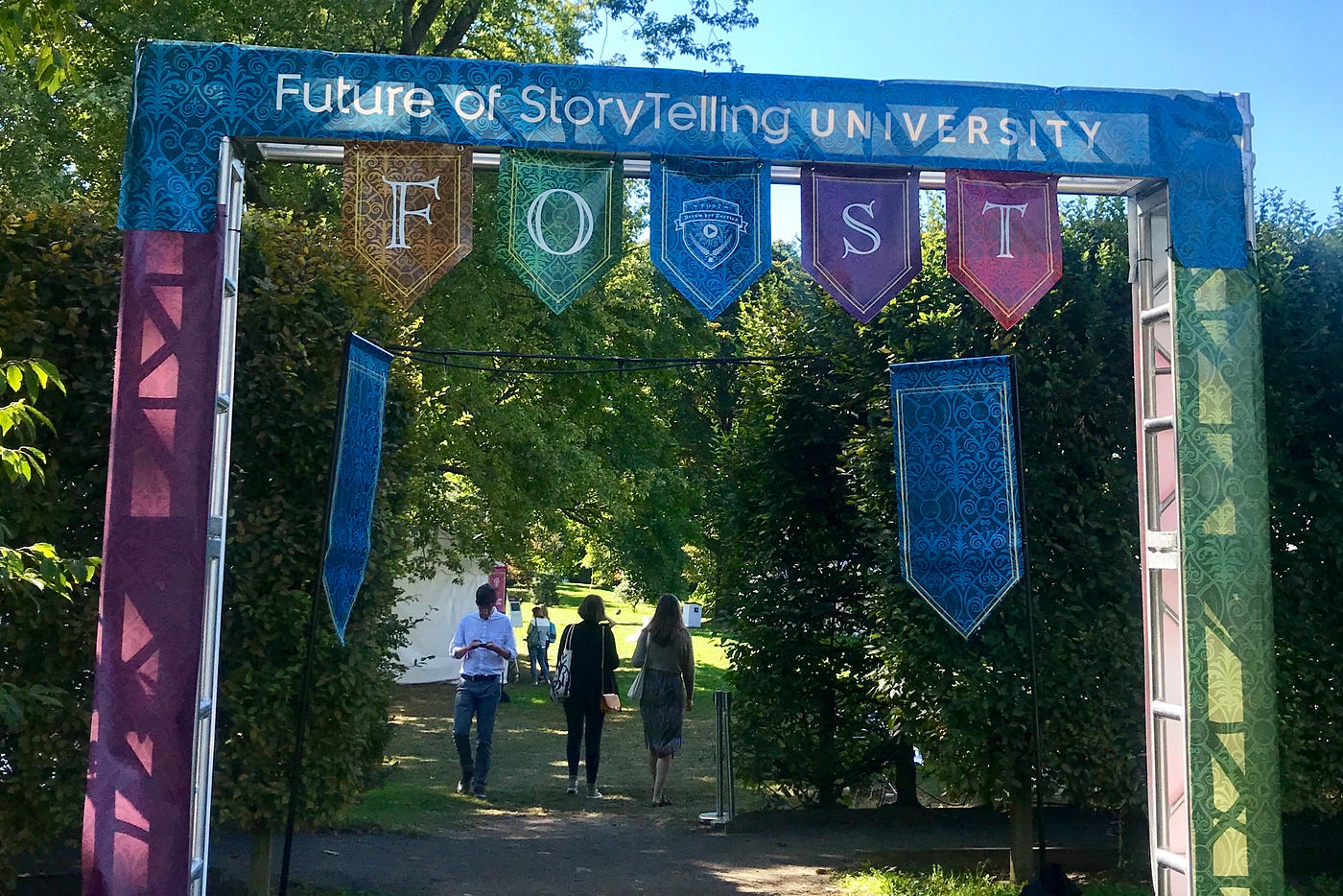
Some people in our community point towards the ubiquity of digital experiences as the reason why people begin to crave tactile, physical ones so strongly; we spend so much time on Facebook, Instagram, Twitter, and Snapchat that an intimate show where a single actor does a scene for you one-on-one feels like an extraordinary, life-changing occasion. But friend of NoPro Marcie Hume points out that this may be an all-boats-rising-with-the-tides situation: where the ability to connect with so many people via our digital channels may actually increase the desire to connect overall, both online and offline. The sheer number of people passing through Sleep No More (which does 10 shows per week currently) in New York City indicates that the audience for these kinds of immersive experiences, including casual fans, has huge potential. Meanwhile, last weekend at New York Comic Con, those with the quickest wits and fastest feet competed for entry into the Westworld Experience among hundreds of eager folks.
And at No Proscenium, our conversations often touch upon the convergence of disparate fields like virtual reality (VR), immersive theatre, gaming, and more. Based upon our interests, the Future of Storytelling Summit & Festival (FoST) in New York City fits right into the NoPro wheelhouse; it’s a smorgasbord of panels, talks, meet-ups, activities, and VR/Mixed Reality exhibits — not your ordinary VR or film or theatre festival.
This year’s Future of Storytelling festival (the second ever) had a lot of high points and wonderful things to see, but also a number of logistical issues that marred the experience as fans saw first-hand what happens when limited supply meets strong demand.
NoPro staff members and contributors Kathryn Yu, Leah Ableson, and Kellian Pletcher report on their experiences below.
Kathryn Yu, Associate Editor, NYC:
Overall access to works was a significant issue at this year’s Future of Storytelling Festival. The most popular activities among the crowd tended to be in the realms of immersive theatre (Broken Bone Bathtub), live action role-playing (LARP) experiences (Ghost Court from Bully Pulpit Games), guided tours (artist Kate McLean’s Smellwalk), or virtual reality-theatre hybrids (Holojam in Wonderland, Alice the Virtual Reality Play). The panels were interesting as were the standalone VR experiences or art installations, but the overall perception was that these were not unique to this particular festival. Interacting with real live humans trumps talking heads and headsets or heat-sensing virtual paintbrushes, as it well should.
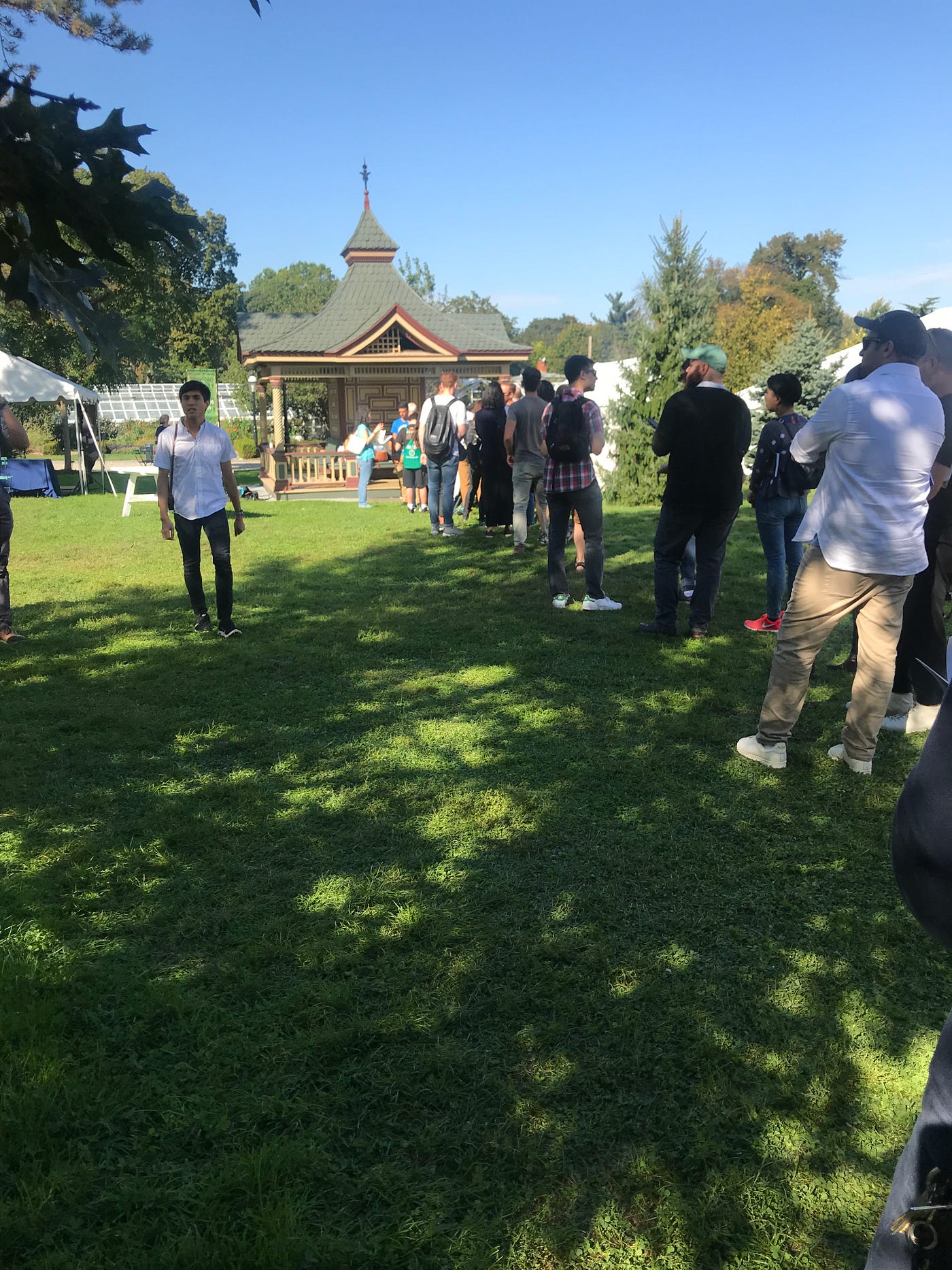
Each of the most popular pieces had a limited number of open slots (or limited “throughput” as theme park designers like to call it). Some works held only four participants at a time in slots of 20-minute increments, not counting breaks for both set resets and letting the actors involved breathe for a moment. Across the three days of the festival, a very low number of people would actually be able to experience something like David Lobser’s Flock, barring any technical difficulties (of which there were many). Quite a few creators had long delays between time slots or simply weren’t able to get their pieces online fast enough to meet demand.
Unfortunately, a lack of volunteers on Friday also meant that creators had to work both the “front of house” duties in communicating to curious onlookers, as well as trying to fix their gear at the same time. One creator resorted to making a handmade “sold out” sign and taping it to a velvet rope outside his tent. We at NoPro never even saw the much-hyped robot arm of Novo Reality taking attendees for a ride on either Friday or Saturday.
The hot and muggy weather on Friday didn’t help either. The Great Lawn had a severe lack of shade and we noticed one tent actually left their official space and set up their VR headsets in some shade nearby. More than a few people remarked how quickly foreheads became hot and sweaty in an open-air tent when wearing a heavy VR headset. Overall the audience seemed to be forgiving of the monkey wrench Mother Nature threw into the mix but remained frustrated at the poor communication and management of expectations.
There was a large lack of transparency to attendees as to how the sign-up process was going to work for the large exhibits on the Great Lawn. Some desperate folks tried to sign up for exhibit slots using the app (which was not possible) or pleaded for space on subsequent days upon arrival to a sold-out exhibit. Signing up for immersive theatre performances or the LARPs was easier to understand via the official communications, as there was an official Activities Booth for these; however, this booth was staffed by a single person with multiple clipboards, writing down names and answering questions for each guest. It was difficult to determine from the end of the line what your total wait time would be, what activities had still slots remaining, or how far down a wait list you might be. The process felt frustratingly analog to a highly connected, digital audience who’s been weaned on Amazon, Uber, and Seamless.
Leah and I reached the head of the sign-up line early on Friday to find that Broken Bone Bathtub was experiencing technical difficulties (the show would go on to have two performances on Friday, be cancelled on Saturday, and then return for a single performance on Sunday) and they weren’t taking any names at that moment. The other piece we were interested in (The Cloud Machine) was actually taking sign-ups elsewhere, so our time spent in line yielded no results. Seemingly gripped by FOMO (the fear of missing out), the person before me signed up for all three performances that were still available.
We later on successfully signed up for The Cloud Machine only to find that at showtime, the staff had accidentally oversold that particular time slot, and we were booted from the theater due to lack of seats.
From what the festival organizers have mentioned to the press, the number of ticket buyers far exceeded expectations, and there appeared to be a severe lack of volunteers on the first day of the Festival. The Future of Storytelling organization expected only 3,000 attendees over the weekend but instead received 5,000. Both Friday and Saturday were officially sold out, and it appeared that Summit attendees also had complimentary access to the Festival proceedings, adding to the number of people wandering the campus. This meant most of the time-slotted experiences had completely full waitlists half an hour after opening. (I attended the Festival on Friday and Saturday, but not Sunday. Saturday’s crowds felt much sparser than Friday’s, possibly because many Summit attendees were traveling home.)
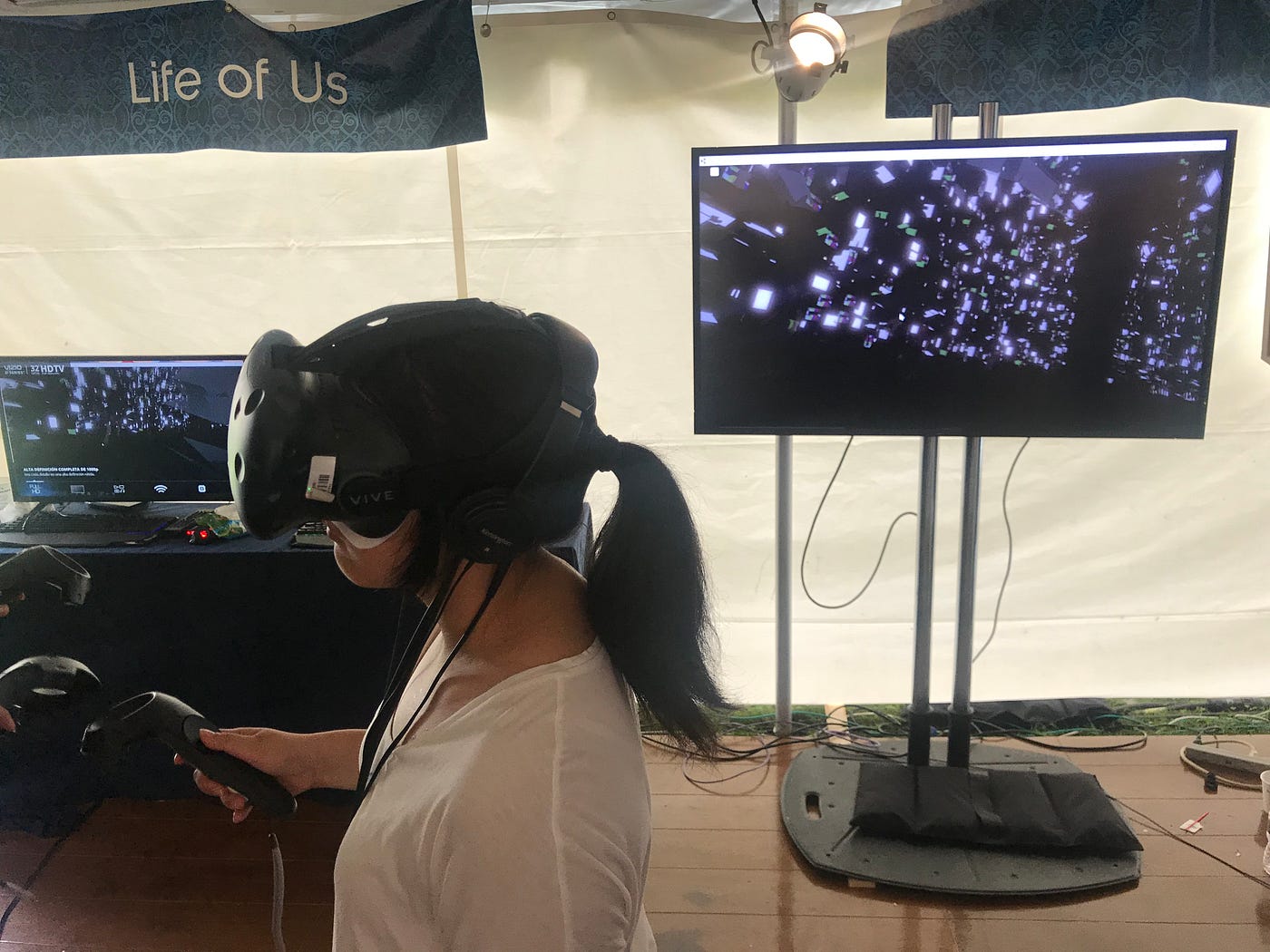
What I did get to experience was lovely. I met a few people while waiting in line and successfully sold them on Siobhan O’Loughlin’s intimate, charming Broken Bone Bathtub. Tears welled in my eyes as I looked a prison inmate directly in the eyes during Step to the Line; similar heartstrings were pulled during the charming father-daughter story Pearl, which centered around an old, junky, but much-loved car. Leah and I successfully evolved together from aquatic creatures to dinosaurs and apes during Life of Us. I had a great conversation with the brilliant Karen Palmer about her work RIOT 2.0 and how someone’s prediction of how they would react in a crisis situation can be totally different from what the artificial intelligence in her piece perceives. And my heart was stolen away during Holojam in Wonderland as we attempted to help Alice bring some cake to the Queen’s party after drinking a magical potion, with both Alice and the White Rabbit being played by actors in the same space. The experience of actors also wearing VR headsets and interacting with the participants (sans headphones) in the same physical space was magical and made me excited for the potential of more hybrid work like this, despite technical difficulties and some VR rendering goofiness.
The few panels and talks I managed to catch were insightful and thought-provoking, but the real appeal of the Festival for many were these smaller scale exhibits and intimate experiences, which often use unreliable cutting edge technology and can be difficult to scale by their very nature, but are also very deserving of a much wider audience.
Get No Proscenium’s stories in your inbox
Join Medium for free to get updates from this writer.
SubscribeSubscribe
Leah Ableson, Contributor:
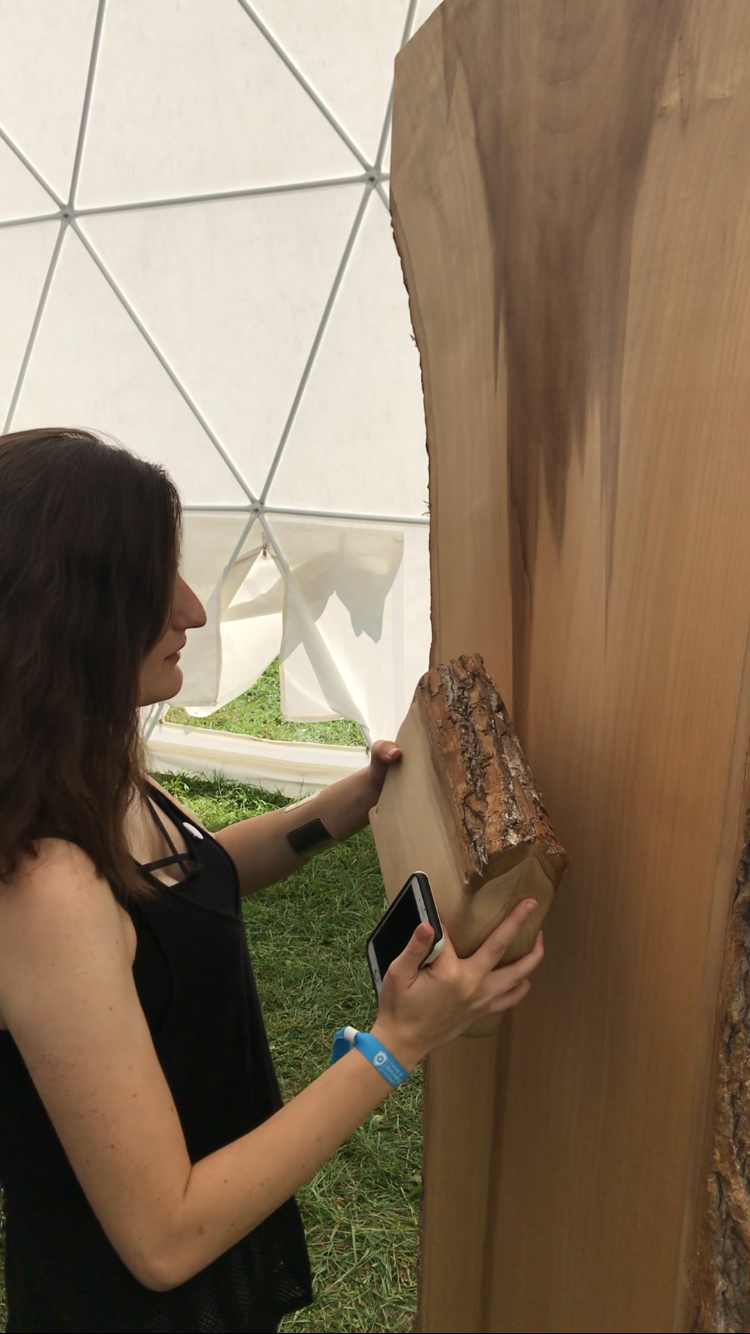
I second everything that Kathryn has said above. These situations are always such a shame, in which great works don’t get the exposure they deserve due to a lack of administrative support. The pieces that I did get to participate in were universally delightful, from a heartfelt session with the completely captivating Broken Bone Bathtub, to the simple and exquisite forest sounds produced by Dryads. However, I’m saddened to think of the other potentially spectacular pieces that worked hard to be at the festival, that I wasn’t able to see due to logistics.
I’ll add as well that the lack of volunteers led to confusion regarding how many pieces were actually even available on site. Right as we were leaving the campus, Kathryn and I encountered several works we had not yet seen, solely because we had sought out the restroom. Even with as easy a fix as accessible signage, those pieces may have had much better attendance. The written materials provided to guests were thorough and helpful, but not always accurate, and required heavy referencing to find your way around.
There were, however, a couple positive takeaways from this experience. First: the market and audience for immersive and mixed reality experiences are booming. Seeing an event like this so extremely surpass their projected numbers is heartening, in a way. Though the volunteer to audience ratio was at such a disadvantage, this is a great sign of the overall health of the demand for this kind of art. People want to experience this work, and a situation like this is a strong sign that creators (and even festivals) should have confidence in the work that they are producing. I think it is evidence that events like FoST can start being advertised as not just “up-and-coming” or “emerging,” but truly as curators of a craft that finally has a history to it, and a voice among audiences. Perhaps embracing this profile will attract more volunteers and administrators — time will tell.
Secondly, there was a definite joy in the amount of variety found among the content provided at FoST. The forms of this kind of work have expanded hugely, and it was so evident when looking at all the pieces next to each other. From quiet pop-up dancers, to the colorful bird-people of Flock, to even the commercialized content from popular brands, it is clear that immersive, VR, and their kin can cast a wide net full of different stories and means of telling them. Even when two VR-enhanced Alice in Wonderland pieces were stationed directly next to each other, there was still merit to and difference in both — and there is something to be said about that.
Kellian Pletcher, Contributor:
I echo everything that Kathryn and Leah said above, but I had a different take on the throughput issue. I worry that the issues with FoST might actually echo a larger issue with live immersive experiences and scaling. In a small way, FoST may have showed us what we want the future of storytelling to be and what in reality, it actually might be.
We had to drive up from Boston, so we made it as early as we could on Saturday morning, around 10:00am. Everything we wanted to see was already unavailable. Broken Bone Bathtub had been cancelled, Ghost Court and the Smellwalk were full, and there was absolutely no chance at all of getting into the two Alice interactives or Flock.
When I asked organizers what was happening, the response was something like a weary scoff — and this was at 10:00am on Saturday. Clearly they’d had this conversation many, many times before.
What was available was VR, and lots of it. VR rigs everywhere. I personally am not a huge fan of VR. But one thing I had to admit was that VR had throughput, and it was functional. Every booth had a chair with a bunch of VR rigs ready for me to play. This might just be a matter of VR being an older technology than mixed reality, so there are lots of Gear VR and Oculus headsets available at reasonable prices. Maybe that wouldn’t have been the case in 2014. Or… it may tell us more about why media companies keep building for and betting on VR even when everybody I know says they find it isolating.
Virtual Reality has a creation, sales, and distribution model that companies know and recognize. They build media. You can only view this media on one type of hardware, which consumer can purchase. This is an old story: television, radio, Xbox, iPhones. Buy the hardware to get access to the content. There’s an existing, well-understood model for both churning out content and ensuring its distribution.
People raved about Holojam in Wonderland and I heard from so many people that Flock was wonderful, but these mixed reality pieces couldn’t scale, so I never saw them. Why are we surprised that so many people want to see creative, beautiful stories? We should be ready for this. Even if they had expected 5,000 rather than 3,000 people, what would Flock have done? How could Holojam have scaled to fit more people in? The fact is, live- and mixed-reality immersive isn’t really prepared for the numbers we’re going to get if we want to survive; meanwhile VR is locked, loaded, and ready to meet demand.
The situation reminded me of reality TV. It’s cheap to make. It’s reliable as an endless source of content. A TV producer might be able to attract only 70% of their potential audience and still make more money than if they had paid for a high production value show with writers and actors and directors. In the end, a much lower quality product can be a better bet for companies and end up being the new entertainment model that gets adopted. If we’re considering the future of storytelling, I think we need to think about this stuff.
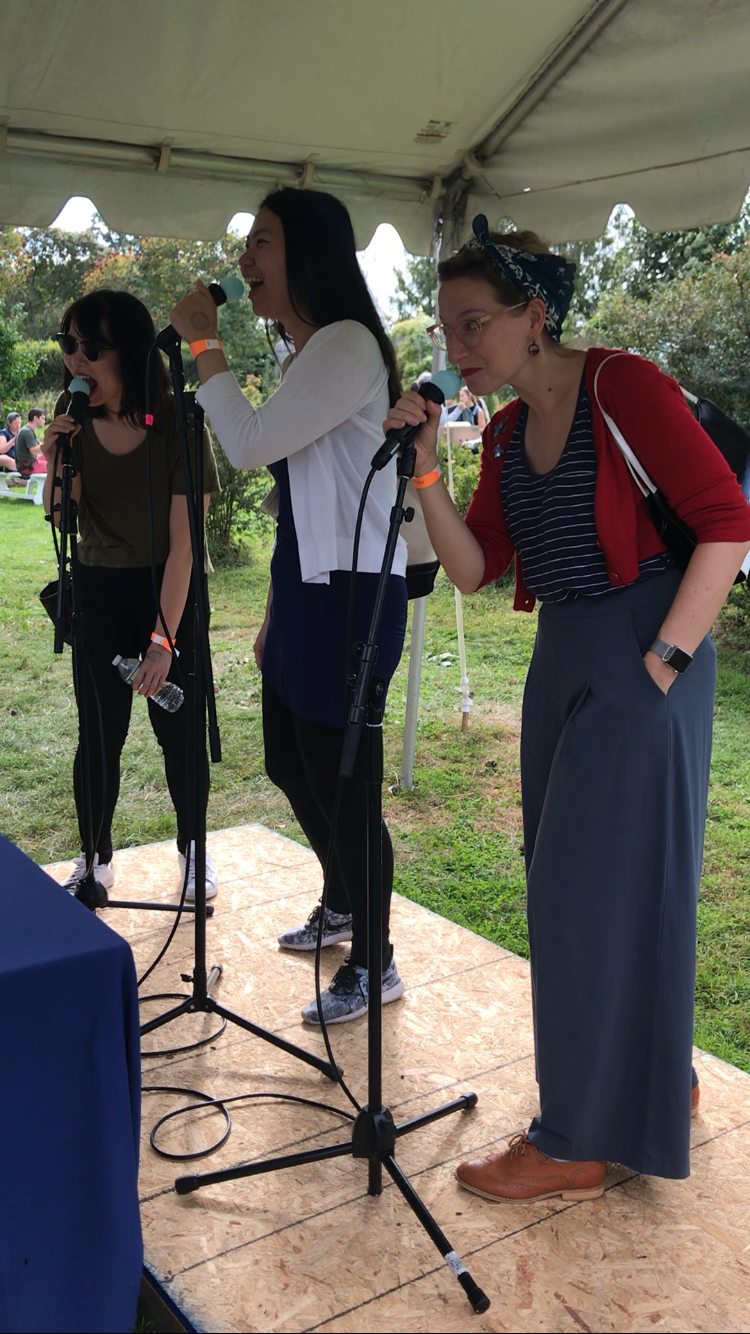
There were a few programs that seemed ready to deal with scaling issues. OurSpace was a fun, goofy, immersive experience that ran off of WhatsApp. They could have run that game all day with 100 people or more for each run. Improv Everywhere also had a system that could scale: you downloaded an app and you all played the story together. It also could have been run multiple times for larger numbers of people if they’d wanted to do that. These are mixed reality immersive experiences that used existing technology, which is a great way to scale an experience: let some other massive company deal with scale. You just write stories for it.
Emilie Baltz’s POPSTARS also had an interesting setup. This was a musical lollipop that the artist attached to a microphone so when you licked it, it made sounds in response. It’s what I like to call the “Yelp” model: a few active participants and a large number of casual watchers. Only three people could play at a time, but the rest of the audience had fun watching the craziness unfold. It was a quick turnover — maybe three minutes per lollipop group. Audience members could watch for a few minutes, move on, and still have a great experience to talk about.
I’m not saying that all immersive theatre and mixed reality works need use existing technology or depend on goofy interactions for success. But if we’re going to truly be part of the “future of storytelling” we need to think about audience throughput and scale now. Escape rooms and the entire haunt industry are immersive entertainment models that have found scaleable solutions. I don’t think the lines and the sell-outs were necessarily a festival problem; I think we’re going to see a lot of this as immersive grows.
If organizers and creators can’t scale reliably, these experiences are going to be like the quaint a capella singers that wandered throughout the festival grounds all weekend: a novelty, but not exactly the future of storytelling.
No Proscenium is a passion project made possible by our generous backers like you: join them on Patreon today!
In addition to the No Proscenium web site, our podcast, and our newsletters, you can find NoPro on Twitter, Facebook, YouTube, Instagram, and in our online community Everything Immersive.

















Discussion